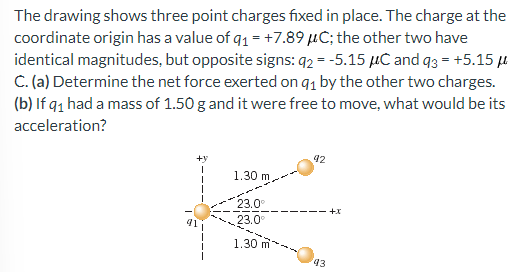The drawing shows three point charges fixed in place. The charge at the coordinate origin has a value of q1 = +7.89 μC; the other two have identical magnitudes, but opposite signs: q2 = −5.15 μC and q3 = +5.15 μ C. (a) Determine the net force exerted on q1 by the other two charges. (b) If q1 had a mass of 1.50 g and it were free to move, what would be its acceleration?



You'll get a detailed, step-by-step and expert verified solution.
 Work With Experts to Reach at Correct Answers
Work With Experts to Reach at Correct Answers